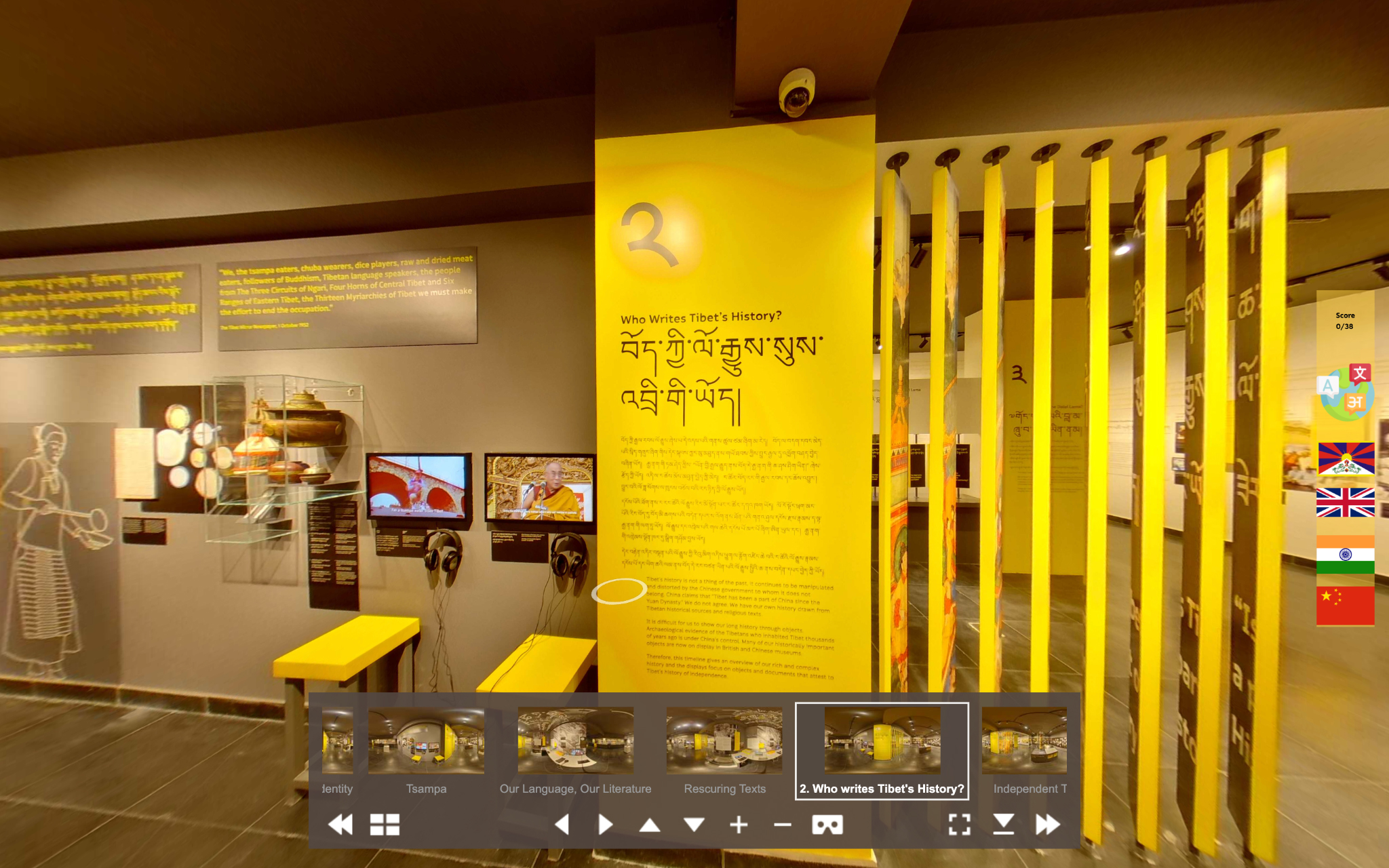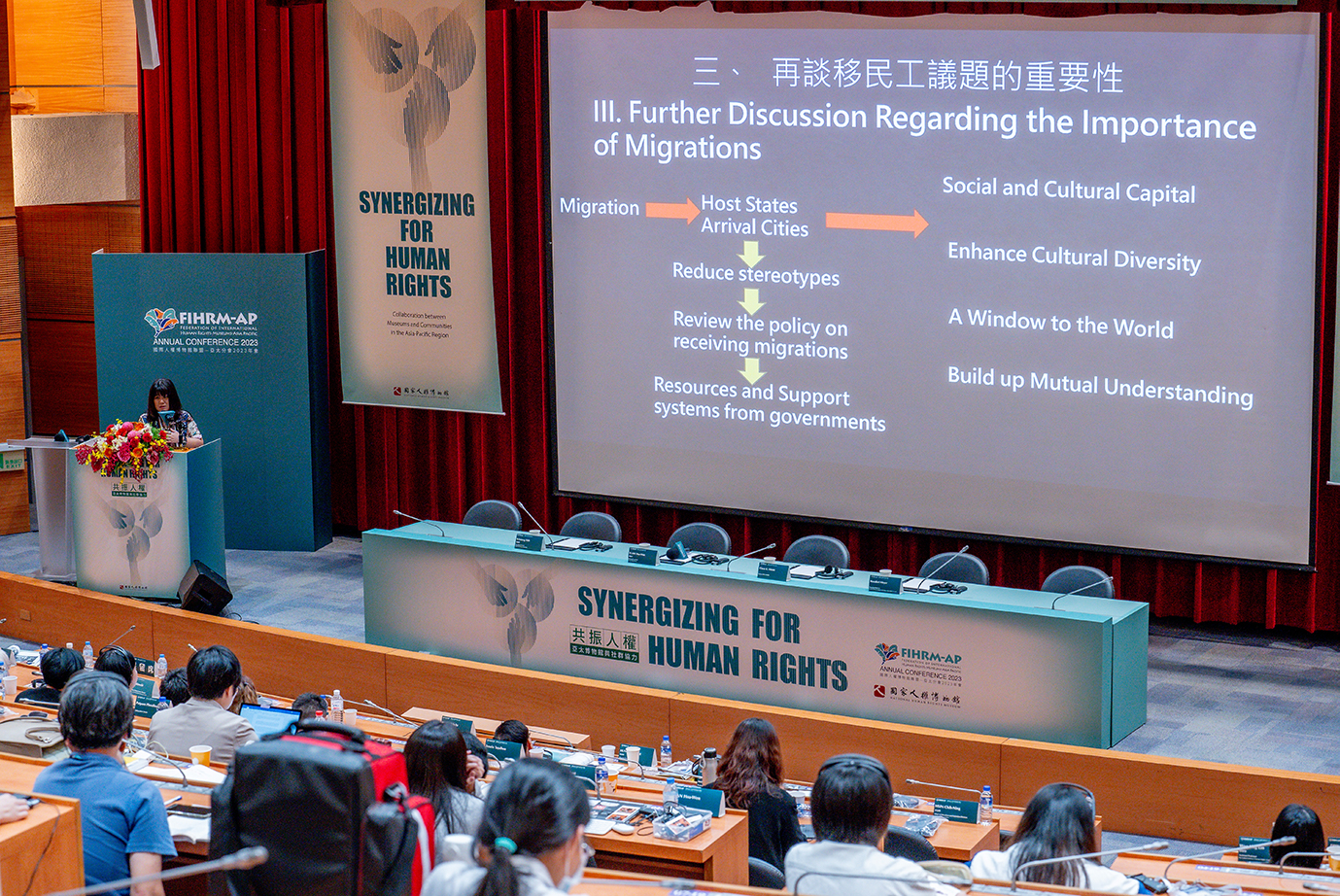THE SIXTH ISSUE OF FIHRM-AP - THE POWER OF ACTION: FIHRM-AP 2023 ON SYNERGIZING FOR HUMAN RIGHTS (II)
Co-authors: Chen Yi-Shan and Ngan Yuet, students at the Graduate Institute of Museum Studies, Fu Jen Catholic University (FJU)
The Power of Action: FIHRM-AP 2023 on Synergizing for Human Rights (II)

Hong Kong NGO Objournalist presented the exhibition “Are We Being Heard? Tools of Protest” in collaboration with Mmuseumm, New York in 2020. The exhibition features objects collected from on-site visits during the Anti-Extradition Bill protest, telling stories of how Hong Kong citizens stood up against totalitarianism in their own ways. (©: Objournalist)
Modernized Initiatives - Human Rights Practices Embodied through Museums
With museum activism closely related to contemporary issues, Rapid Response Collection (RRC) was launched by the Victoria and Albert Museum (V&A) in the U.K. in 2014 as a strategy to help museums record major events around the world over the past decade such as the COVID-19 pandemic and social movements. Taking the Anti-Extradition Bill Movement in Hong Kong as an example, professor Chen Chia-Li from the Graduate Institute of Museum Studies of National Taipei University of the Arts (TNUA) talked about how museums in the Asia-Pacific region promote human rights practices through activism. Professor Chen focused on actions taken by museums in preserving, displaying, and promoting the spirit and ideas of social movements; the discussion was taken further to see in depth how museums became recorders and voices of social movements, which, in turn, attract more people’s attention to social issues today and incite their reflection.
There are also cases where mobile museums are used to achieve transformational justice. For instance, the Deep South Museum and Archives’ Initiative started by independent researcher Patporn Phoothong and assistant professor Phrae Sirisakdamkoeng from the Faculty of Archaeology of Silpakorn University, Thailand. The initiative aims to preserve and display the records and archives of the victims of Thailand's insurgency in the deep south. Exhibitions are used as tools to build a mobile museum that is democratic and inclusive of diverse voices which advocate peace and justice. In this way, a dialogue between local residents and the younger generation can be formed to better understand the collective, saddened past in their communities.
Tell Your Own Stories! Speak up for Human Rights through Community Participation
In recent years, museums have focused their work on returning agency and voice to the parties involved in historic events. One example is the Wirrin Yira Koorl: Fremantle Prison Aboriginal Heritage Management Plan, organized by the Department of Planning, Lands and Heritage (DPLH) in Western Australia. “Wirrin Yira Koorl” in the local indigenous language, refers to “liberating the soul.” The plan shows how community participation affects decolonizing museums and interpreting negative heritage sites. Dr. Oonagh Quigley, a Fremantle Prison Heritage Interpretation officer, explained how they used a five-year project featuring the spirit of "focusing, transforming, accelerating, and refocusing" to work with over 200 indigenous communities in Western Australia. The goal is to give the agency back to communities and include them in decision-making.
When it comes to community participation of victims in places of conflict, the Voice of Women Media in Nepal engages families of victims in rural areas with the MEMORY, TRUTH JUSTICE (MT&J) Educational Outreach Program. Images, sounds, and texts from over 100 stories of families of the victims were documented to show the impact brought upon rural areas for ten years by the Maoist insurgency in Nepal’s civil war. Such impact was devastating and has long been ignored by mainstream voices in Nepal. The program aimed at establishing a space for open dialogue and reconciliation through objects displayed at a series of events. Independent researcher Patporn Phoothong, on the other hand, shared practices in Thailand. Through years of field research, Phoothong’s research team has worked with Muslim female groups in the deep south of Thailand to come up with a peace museum. They try to create a space for female groups that are disadvantaged in terms of politics, economy, and education. The space allows them to freely express their pain of losing relatives and friends and the history that the government tries to cover up, and to retrieve the dignity which all human beings are born with.

MT&J is a project which documents, archives, and shares personal stories of survivors and families of the victims of the armed conflict in Nepal from 1996 to 2006. At the end of the project, a website was set up, along with a series of events for the public to display victim testimonials, videos, and photos. (MEMORY, TRUTH & JUSTICE: The MT&J website, Nov. 14, 2023, https://www.memorytruthjustice.com/)

The Tibetan Museum website comes with a virtual tour of the permanent exhibition – “We are Tibet & This is our story,” which showcases Tibetan culture and heritage, history of exile, and the teachings of His Holiness the Dalai Lama. (The Tibet Museum Virtual Tours: The Tibet Museum website, Nov. 14, 2023, https://d3rtf2y9gc3jto.cloudfront.net/TTM%20VT/index.htm)
The Tibet Museum in India is an example of joint participation of exiled communities. It was single-handedly organized by the Tibet community, as it is committed to advocating ethnic autonomy and cultural rights to the world and exposing the ugly truth of political persecution upon this group of people. Director Tenzin Topdhen of the museum sees the institution as an important medium to promote human rights and decolonized narratives. The permanent exhibition cernters on the Tibetan people and displays first-hand materials and daily necessities, rare photos, testimonies of political prisoners, and even torture instruments provided by those who fleed across the world. There are also portraits and suicide notes which pay tribute to the 157 Tibetans that set themselves on fire to fight for their freedom. It is hoped that by conveying the correct narratives and historical truth, Tibetans will be able to combat cultural erasure orchestrated by the Chinese Communist Party (CCP).

NTM Curator Yuan Hsu-Wen of an exhibition entitled– “A Centenary Dialog - When Transnational Migrants and Museum Collections Cross Paths” explained the process of curation and how museums serve as platforms for cross-cultural exchange to engage diverse communities in cultural equity practices.
Diverse Communities - Museums & Human Rights of Migrants
As the number of people crossing borders and traveling across the world increases drastically, immigration and migrant workers have become a much discussed topic in museums today. Independent researcher Claus K. Meyer and associate professor Morakot Meyer of the Research Institute for Languages and Cultures of Asia (RILCA) at Mahidol University in Thailand examine such a topic from cases in Thailand, in terms of internal and transnational migration. They study how population movement in Thailand shapes the country’s great narrative, identity, and values, and how museums can play a part in telling stories of the changes during the process. Research assistant Yuan Hsu-Wen at the National Taiwan Museum (NTM) shared an example from a special exhibition curated by NTM in 2022 - A Centenary Dialog - When Transnational Migrants and Museum Collections Cross Paths. The exhibition focused on the collaboration between Southeast Asian immigrants and museum researchers over the past ten years to study events that could be seen as acts of inclusion and exclusion. Through these materials, researchers tried to find characteristics the two parties share in common, so as to facilitate cross-cultural communication.
Conclusion
FIHRM-AP Annual Conference 2023 showed the unyielding spirit of museums and cultural organizations in the Asia-Pacific region in human rights advocacy. They fear no power and do not settle with the status quo, as they continue their work in fighting for the human rights and values that people truly believe in. Through the cases and practices presented by an array of speakers, one could see momentum infused by museum activism over the years. Despite different social contexts in different places, all the participants agreed upon three concepts - proactiveness, inclusivity, and co-creation. Whether it is a museum with a physical venue or a cultural organization that features mobile exhibitions without a brick-and-mortar space, they all believe in the idea of “Just do it!” In this way, positivity brings autonomy and agency, which creates a space for free dialogue and inclusion of the voices of people with different cultural backgrounds, social classes, and political stances. Human rights practitioners can also further integrate such agency into collaboration with victim communities, so that the parties involved, with the power drawn from their personal experiences, have a voice to stand up against totalitarianism.
That being the case, there are also downsides of these initiatives to frontline practitioners, such as threats against their personal safety and the negative feelings accumulated when working with victim communities, which can be hard to digest. While museums fight the fight for victim communities, they should take a pause from time to time to care for those practitioners in the field. Only when there is an environment conducive to their physical and mental health can the work of human rights be carried on.


